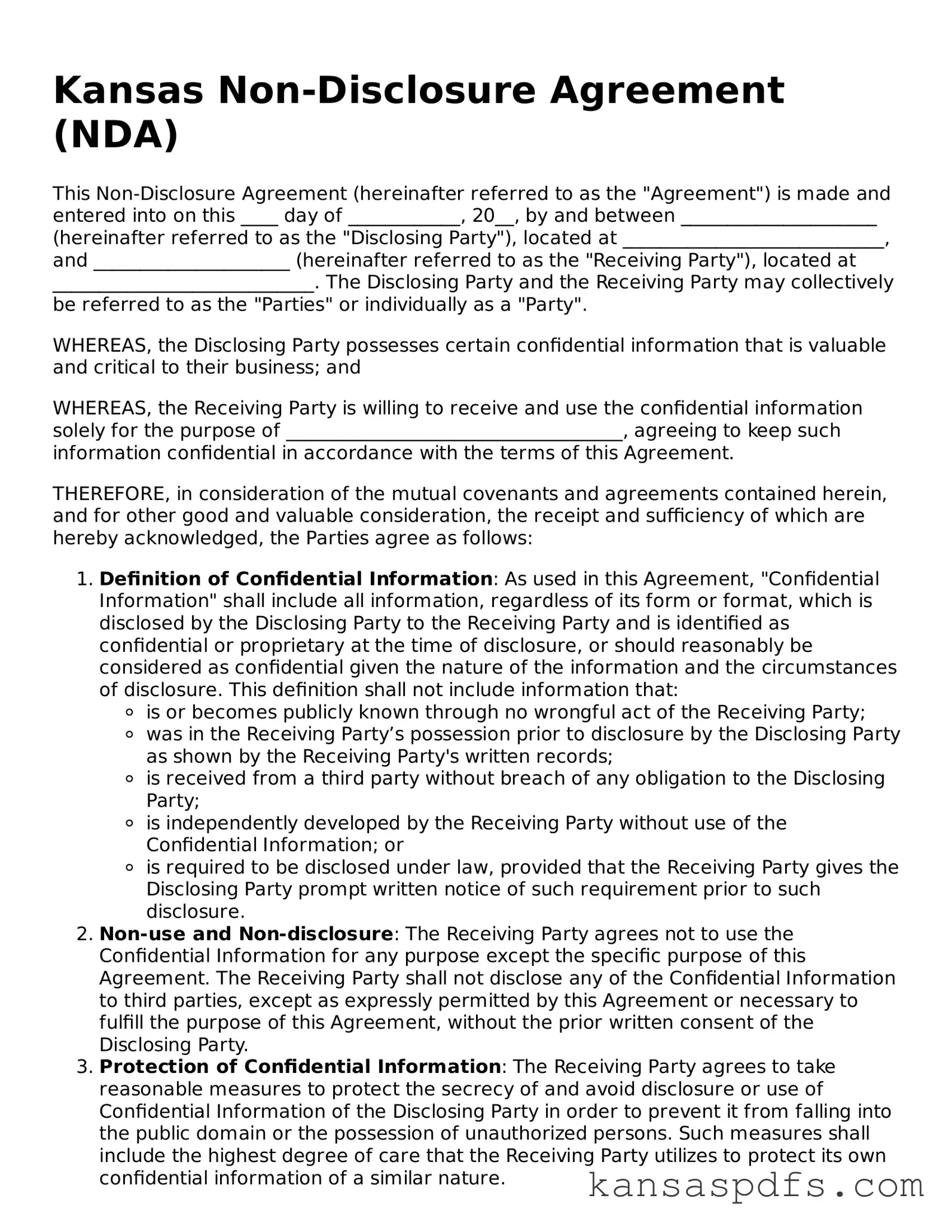What is a Kansas Non-disclosure Agreement?
A Kansas Non-disclosure Agreement (NDA) is a legal contract between at least two parties that outlines confidential material, knowledge, or information that the parties wish to share with one another for certain purposes, but wish to restrict access to or by third parties. It creates a confidential relationship to protect any type of confidential and proprietary information or trade secrets. In Kansas, as in other states, these agreements are used to safeguard sensitive information.
Who needs a Kansas Non-disclosure Agreement?
Any individual or business entity in Kansas that needs to protect confidential information from being disclosed to unauthorized parties should consider using a Non-disclosure Agreement. This is especially relevant for businesses that share proprietary information with potential investors, employees, contractors, or business partners.
What types of information can be protected by a Kansas Non-disclosure Agreement?
A wide range of information can be protected, including but not limited to, trade secrets, business strategies, financial data, technical processes, client databases, and any other information that is not publicly known and gives a business a competitive advantage.
Are Kansas Non-disclosure Agreements legally binding?
Yes, Non-disclosure Agreements in Kansas are legally binding contracts. For an NDA to be enforceable, it must be fair, the information covered must be clearly defined, the signatory parties must agree to the terms, and the purpose of the agreement must be lawful.
How long does a Kansas Non-disclosure Agreement last?
The duration of a Non-disclosure Agreement in Kansas can vary based on what the parties agree upon. Some NDAs are in effect for a specific time period, while others continue indefinitely until the information becomes public knowledge or is no longer considered confidential.
Can a Kansas Non-disclosure Agreement cover discussions that occurred before the agreement was signed?
Yes, a Non-disclosure Agreement in Kansas can include provisions that cover confidential information shared before the agreement was signed. This is often referred to as a retrospective or "retroactive" NDA. However, for this to be enforceable, all parties involved must clearly agree to these terms.
What happens if someone violates a Kansas Non-disclosure Agreement?
If a party breaches a Non-disclosure Agreement in Kansas, the non-breaching party may pursue legal action against them. Remedies may include seeking damages for losses incurred because of the breach or an injunction to prevent further disclosure or use of the confidential information.
Can a Non-disclosure Agreement in Kansas restrict an employee's right to work?
No, a Non-disclosure Agreement cannot unlawfully restrict an employee's right to work in their field or profession. While an NDA can protect confidential information, it must not serve as a non-compete clause that unfairly restricts an employee's career opportunities.
Is a lawyer required to draft a Kansas Non-disclosure Agreement?
While it's not legally required to have a lawyer draft a Kansas Non-disclosure Agreement, it's highly recommended. A lawyer can ensure that the agreement is correctly drafted to meet the specific needs of the parties involved and to ensure its enforceability under Kansas law.
